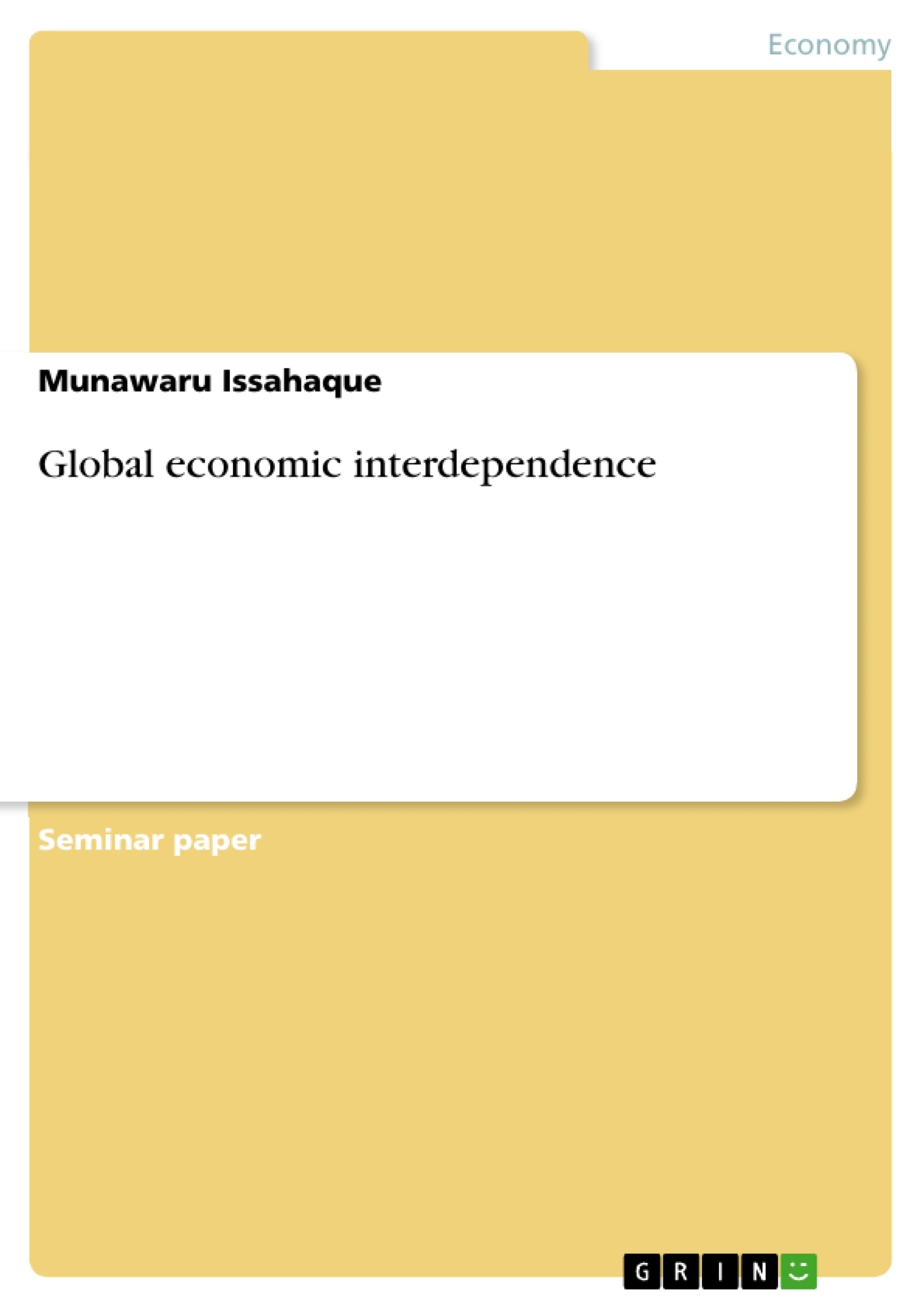The paper seeks to explain the existence of global economic interdependence. It also tries to explain that global economic interdependence occurs through trade, labour migration and capital flows. International Economics means generally the patterns and consequences of transactions and interactions between inhabitants of a country and different countries. It broadly covers international trade studies, international finance studies, international monetary economics and macroeconomic studies, as well as international migration.
Table of Contents
- Introduction to International Economics
- Global Economic Interdependence
- Trade
- Labor Migration
- Capital Flows
- International Trade Relations
- International Monetary Relations
Objectives and Key Themes
This paper aims to explain global economic interdependence through trade, labor migration, and capital flows. It explores the concepts of international trade relations and international monetary relations within the broader context of international economics and globalization.
- Global Economic Interdependence
- International Trade Theory (Comparative Advantage)
- Balance of Trade and Payments
- International Monetary Relations
- Government Intervention in International Markets
Chapter Summaries
Introduction to International Economics: This introductory section establishes the scope of international economics, encompassing international trade, finance, monetary economics, and macroeconomic studies, as well as international migration. It highlights the core concept of the management of scarce resources relative to the unlimited needs of countries and the role of government intervention through policy variables like tariffs.
Global Economic Interdependence: This chapter delves into the mechanisms through which global economic interdependence manifests. It explains how trade, labor migration, and capital flows create interconnectedness between nations. The discussion likely explores the various factors influencing each of these elements, including supply and demand, comparative advantage, and government regulations.
International Trade Relations: This section likely examines the theoretical foundations of international trade, focusing on concepts like comparative advantage and opportunity cost. It explores the balance of trade, trade deficits, and the methods countries use to finance trade imbalances. The role of government policies in influencing trade, including tariffs and non-tariff barriers, is also likely addressed. The chapter likely uses examples of specific countries and their trading relationships to illustrate the concepts.
International Monetary Relations: This chapter explores the intricacies of international monetary relations, including foreign exchange markets, balance of payments accounting, capital mobility, and the impact of government fiscal and monetary policies. It examines exchange rate regimes and their influence on economic behavior, and the roles of international institutions such as the International Monetary Fund. The discussion likely involves analysis of how these factors interact to influence global economic stability and trade.
Keywords
International economics, global economic interdependence, international trade, comparative advantage, balance of trade, balance of payments, international finance, international monetary relations, exchange rates, government intervention, tariffs, quotas, capital flows, labor migration.
Frequently Asked Questions: Comprehensive Language Preview of International Economics
What topics are covered in this language preview?
This preview offers a comprehensive overview of international economics, including an introduction to the field, global economic interdependence (focusing on trade, labor migration, and capital flows), international trade relations, and international monetary relations. It also includes the objectives and key themes, chapter summaries, and keywords.
What are the key themes explored in the preview?
The key themes revolve around global economic interdependence, international trade theory (particularly comparative advantage), balance of trade and payments, international monetary relations, and the role of government intervention in international markets.
What are the main chapters covered in the preview?
The preview summarizes four main chapters: "Introduction to International Economics," "Global Economic Interdependence," "International Trade Relations," and "International Monetary Relations."
What does the chapter on "Introduction to International Economics" cover?
This introductory chapter sets the stage by defining the scope of international economics, encompassing trade, finance, monetary economics, macroeconomic studies, and international migration. It emphasizes the management of scarce resources and the impact of government intervention through policies like tariffs.
What is discussed in the chapter on "Global Economic Interdependence"?
This chapter examines how trade, labor migration, and capital flows interconnect nations. It likely explores the factors influencing these elements, such as supply and demand, comparative advantage, and government regulations.
What topics are included in the chapter on "International Trade Relations"?
This section likely covers the theoretical foundations of international trade (like comparative advantage and opportunity cost), balance of trade, trade deficits, methods for financing trade imbalances, and the influence of government policies (tariffs and non-tariff barriers). Real-world examples of countries and their trading relationships are likely included.
What does the chapter on "International Monetary Relations" entail?
This chapter explores foreign exchange markets, balance of payments accounting, capital mobility, and the impact of government fiscal and monetary policies. It examines exchange rate regimes and the roles of institutions like the International Monetary Fund, analyzing their influence on global economic stability and trade.
What are the keywords associated with this preview?
Keywords include: International economics, global economic interdependence, international trade, comparative advantage, balance of trade, balance of payments, international finance, international monetary relations, exchange rates, government intervention, tariffs, quotas, capital flows, and labor migration.
What is the overall objective of this language preview?
The preview aims to explain global economic interdependence through the lens of trade, labor migration, and capital flows. It explores these concepts within the broader context of international economics and globalization.
What is the intended audience for this language preview?
The preview is intended for academic use, supporting the analysis of themes in a structured and professional manner.
- Quote paper
- Dr. Munawaru Issahaque (Author), 2012, Global economic interdependence, Munich, GRIN Verlag, https://www.grin.com/document/490835



